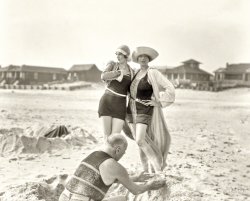
MAY CONTAIN NUTS

Search Shorpy
SHORPY ART

Framed or unframed, desk size to sofa size, printed by us in Arizona and Alabama since 2007. Explore now.
Join and Share
Ad-Free Shorpy
Shorpy is funded by you. Patreon contributors get an ad-free experience.
Learn more.

Recent comments
- Land of the free
- Broad-Exchange Bldg
- Parking innovation
- The old block
- "Peck turned a sweet propeller"
- National Bank Building
- Notch shot
- Straight ahead (right, left, left, right)
- Ship lifespans
- New service
- You Say Station, I Say Potato ...
- Iron Age
- Thank you, Cornelius Vanderbilt
- Grand Central Terminal
- If they made a movie of it
- Obsolete by then.
- Half the tonnage at the NYPANO dock
- Ravages escaped, bank notes signed and dated
- Chatham expansion
- Steepled in History
- Made by York
- No Summer Vacation
- Wait a minute ...
- $$$
- Joad on the Road
- Street Lights Survive
- Now & then
- More or Less? It's a lot less
- A new image.
- Same ol' story ...
Member Photos
The Shorpy
Printporium
Printporium
Search Shorpy
Search results -- 30 results per page
- Bethlehem-Fairfield: 1943
- ... From the yard's opening in 1941 until its last ship, the Atlantic City Victory, slid down its ways in October 1945, the yard delivered more ... Posted by Dave - 10/19/2013 - 11:24am -
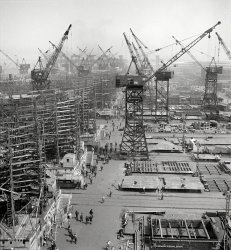
- Patriotic Pole Sitter: 1929
- ... during the summer months on the old Steel Pier in the OLD Atlantic City, a pole sitter was a prime attraction, along with the diving horse.
... Posted by Dave - 04/21/2013 - 7:49pm -
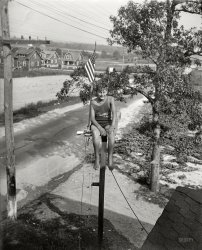
- Left on White: 1926
- ... yesterday upon his return from a tour of cities from Atlantic City to St. Louis.
Another result of his trip was to change his opinion ... Posted by Dave - 09/13/2011 - 12:16pm -
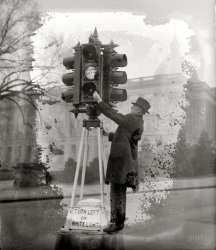
- Moxie Kids: 1904
- ... he built a rolling scenery railway on the Boardwalk in Atlantic City that is said to be the forerunner to Space Mountain in Disneyland. He ... Posted by Dave - 08/05/2012 - 1:43pm -
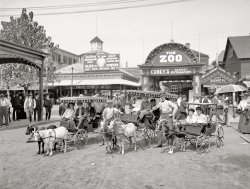
- Florida Times-Union: 1904
- ... would hit Jacksonville and keep right on going. The city's days as a destination were doomed by the relentless push southward of ... than 1921 this building at 136 W. Bay Street became the Atlantic Hotel. An article in The Florida Times-Union was about a character ... Posted by Dave - 08/09/2012 - 7:14pm -
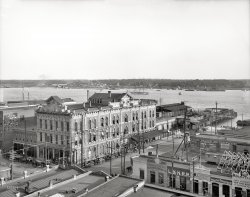
- Clark's Corner: 1937
- ... Indian River and about 8 miles from Cocoa Beach and the Atlantic Ocean. - Ken]
Pop. 120 As described in Florida: A Guide to ... (Federal Writers' Project, 1939):
"INDIAN RIVER CITY, 50.9m (19 alt., 120 pop.) formerly called Clark's Corner, consists of a ... Posted by Dave - 02/13/2014 - 5:47pm -
![Clark's Corner: 1937 January 1937. Brevard County, Florida. "Roadstand near Cocoa." Photo by Arthur Rothstein for the Farm Security Administration. View full size.
Cocoa Beach!Just wait another thirty years, give or take. A bottle will wash up on the shore, to be discovered by an astronaut on a training exercise.
[No bottles will be washing up in Cocoa, which is on the Indian River and about 8 miles from Cocoa Beach and the Atlantic Ocean. - Ken]
Pop. 120As described in Florida: A Guide to the Southernmost State (Federal Writers' Project, 1939):
"INDIAN RIVER CITY, 50.9m (19 alt., 120 pop.) formerly called Clark's Corner, consists of a few stucco houses, filling stations, and a post office, overlooking the broad reaches of the river. Indian River City is at the junction with State 22 (see Tour 9).
South of Indian River City dense growths of palms and pines flank U.S. 1; palmetto thickets and low green shrubbery add to the beauty of the water views."
In Color!Corner of (now) SR50 and US1. Postcard from the State Archives of Florida, (Florida Memory).
I HAD to look it upa TEMPLE is a bright orange red colored fruit, oval shaped, easy to peel and a cross between an orange and a tangerine, it has lots of seeds and a bitter orange flesh under the skin.
TitusvilleThis stand was about 20 minutes away from Cocoa and 30 miles from Cocoa Beach. The corner is in Titusville (I live within walking distance of it). Indian River City was consolidated with Titusville back in the 60's. Today if you look across that river you can see Kennedy Space Center. There is nothing left of the buildings in the post card. It's now a busy intersection with a Walgreens and a gas station.
The temple orangeThe temple orange originated in Winter Park Florida, developed by Louis Hakes and named after W. C. Temple, both residents of Winter Park. There's a Temple Drive and Temple Trail in Winter Park, the latter leading into the neighborhood in which I grew up.
(The Gallery, Arthur Rothstein, Eateries & Bars, Florida, Stores & Markets)](https://www.shorpy.com/files/images/SHORPY_8b28486a.thumbnail.jpg)
- Ask a Teenager: 1922
- ... a concert that was taking place in another part of the city, the effect was distinctly spooky. Even men used to transcontinental ... eighteen American amateur stations were heard across the Atlantic in the course of a single night.
A Question About Shoes ... Posted by Dave - 07/23/2012 - 10:53am -
![Ask a Teenager: 1922 Washington, D.C., circa 1922. "William Armstrong Perry." A former editor of Boys Life and Scouting magazines, W.A. Perry authored a study called "Radio in Education." National Photo Company Collection glass negative. View full size.
Schooled by RadioIn the Canary Islands, where I live, a local, non-for-profit radio station (Radio ECCA for anyone curious enough) did a great job teaching to write and read, as well as finishing elementary and high school education to adults who never had the opportunity to get an education or were forced to leave school at an early time. It's still in operation, though now its focus has changed.
Crystal Radio The radio is a crystal set receiver (not a transmitter), probably a Westinghouse Aeriola Jr. Model RE. Crystal sets, which preceded tube radios, operated without batteries or any other power source. They required a long wire antenna and an earth ground connection to receive AM broadcasts.
[What's the mouthpiece for? - Dave]
Seizing Music Out of the Air Although a bit optimistic concerning the speed of development, in 1921 Mr. Armstrong Perry accurately predicted the development of cell phones: "The demonstration ventured to prophesy that the day was at hand when by means of a simple pocket apparatus one could call up his home and talk without wire from almost any distance, and there was none dared call him a dreamer! "
Washington Post, Dec 18, 1921
News of Boy Scouts
At the monthly meeting of the Scoutmasters club, held in Epiphany parish house last Tuesday evening, modern achievements in wireless held the center of the stage. Through the courtesy of Mr Armstrong Perry, the latest apparatus in telephonic communication without the use of wires was demonstrated. When a little equipment, most of which could be carried in a suitcase, was set up in the room, and after slight adjustment began reproducing a concert that was taking place in another part of the city, the effect was distinctly spooky. Even men used to transcontinental telephonic communication were abashed at this exhibition of seizing music out of the air and amplifying it until all in the room could enjoy it; without receivers to their ear, without even the outside wires running high over head, to which the radio operator is accustomed.
The demonstration ventured to prophesy that the day was at hand when by means of a simple pocket apparatus one could call up his home and talk without wire from almost any distance, and there was none dared call him a dreamer! So rapid have been the strides in the last few months in radio that no prophecy seems extravagant. Only a few weeks ago eighteen American amateur stations were heard across the Atlantic in the course of a single night.
A Question About ShoesLooking at these images, I am always drawn to the shoes. How often these days do you ever see shoes that are this worn? I always wonder how many shoes a typical adult would have had in their wardrobe and how many siblings would wear the same pairs.
[Indeed. Feet and shoes seem to hold a certain fascination for the Shorpy commentariat. - Dave]
Worn or just poorly maintained?A good cleaning and some polish and those shoes would look a whole lot better. Soles and heels don't look worn, although the angle is not the best.
Good question about those shoes.I'm glad to see a photo of William Armstrong PERRY, who is my 1st cousin 3 times removed, here on your website. I'm informed that he was always quite interested in scouting; collecting coins; studying radio communications (fairly new at that time), traveling to the relatively unknown places of the world, and was a writer as well. He married a woman named Lulu MONTANYE who was a writer as well (articles for McCalls amongst others, and a few short stories). She was quite a 'liberated' woman for those times and remained quite interested in many of her husband's endeavors, including his radio hobby.
To me, the cut of those shoes, the cut of the hair, the petite hands, make me wonder if this is William's wife, and not a boy interested in radio as the information provided here implies. Do you have more information on who is pictured in the photo?
Also, if the photo was taken at William's home, then it would have been either at their home in Addison, New York, or their home in Westport, Connecticut.
William Armstrong Perry survived a plane crash and spending 15 days in the Venezuelan Jungle in May 1837. He died on July 5, 1938 at his Westport home of a heart attack. Some say the heart attack was a result of lingering injuries from the plane crash. Lulu lived until 1966. Both are buried near the home of their childhood at Canton, Bradford Co, PA.
(Technology, The Gallery, D.C., Natl Photo)](https://www.shorpy.com/files/images/30168u.thumbnail.jpg)
- Oyster House: 1953
- ... Another in a series of professional 8x10 pictures taken in Atlantic City in August, 1953 for Better Living Magazine, featuring my in-laws. My ... Posted by Born Too Late - 06/15/2013 - 12:11pm -
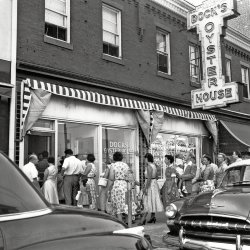
- On the Boardwalk
- My grandfather photographed the Atlantic City boardwalk on a family trip, in 1964. View full size.
Times have ... that building once stood. The Central pier has one of Atlantic City's many "every thing $.99 cent" stores in it. This photo was taken ... Posted by adamgilson - 05/15/2015 - 10:55am -
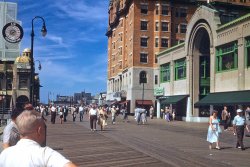
- Old Baldy: 1863
- ... the Florida Keys as welll as Barnegat, NJ; Absecon in Atlantic City and numerous others.
He almost single handedly converted to the ... Posted by Dave - 09/26/2008 - 6:57am -
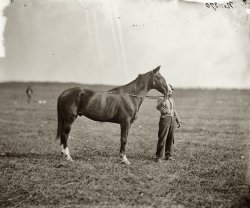
- Merry Christmas: 1913
- ... all began. Madison Park was the first place in New York City to put up a public Christmas Tree. Great tradition that has spread to ... Felicitations to all Shorpologists on both sides of the Atlantic!
From Andrew in Central Scotland.
1913 Color What color ... Posted by Dave - 12/24/2013 - 11:47pm -
![Merry Christmas: 1913 One hundred years ago -- yet it seems like just yesterday that we first posted this.
New York, December 1913. "Christmas tree, Madison Square." 8x10 glass negative, G.G. Bain Collection. View full size. Happy holidays from Shorpy!
Merry ChristmasWishing all friends and followers of Shorpy a very merry Christmas and a happy new year.
Edmund
100 Years Later And 11 Blocks NorthAt 34th Street and 5th Avenue, the Empire State Building, illuminated by the new LED lighting system, shows off it's Christmas colors. We are also being treated to several Light Shows.
Where it all began.Madison Park was the first place in New York City to put up a public Christmas Tree. Great tradition that has spread to pretty much all of the Parks here in Manhattan.
Toy CenterWe're looking to the west in this picture. The building in the background is 200 Fifth Avenue, completed just a few years earlier, which is called the "Toy Center" because for decades it was mainly occupied by toy manufacturers and wholesalers. Today it has a more varied tenant mix, though it still hosts a major annual trade show for the toy industry.
The Flatiron Building, a favorite on this site, is just out of view on the left. Just behind the photographer would be the Metropolitan Life Tower, which had just become the second-tallest building in the world. It had been the tallest from 1909 until the completion of the Woolworth Building earlier in 1913.
An' a Guid New Year!Seasonal Felicitations to all Shorpologists on both sides of the Atlantic!
From Andrew in Central Scotland.
1913 ColorWhat color process was used for this - Autochrome? Or was it colorized?
[Note the tag above it that says "Colorized Photos." -tterrace]
(ShorpyBlog, Christmas, Colorized Photos, G.G. Bain, NYC)](https://www.shorpy.com/files/images/01807u-xmas-1.thumbnail.jpg)
- Triple Cola: 1939
- ... blusun meant the Coca-Cola clock to the right below the Atlantic Ale/Beer neon sign?
[Well duh. Thankyou! - Dave]
Sold ... When I first moved to Durham in the early 1980s, the city still had a sweet, distinctive aroma of curing tobacco in its downtown ... Posted by Dave - 04/20/2019 - 12:45pm -
![Triple Cola: 1939 November 1939. "Lunch stand and tobacco inside entrance to warehouse at end of auction sale. Durham, North Carolina." Medium format acetate negative by Marion Post Wolcott for the Farm Security Administration. View full size.
Um, erPerhaps blusun meant the Coca-Cola clock to the right below the Atlantic Ale/Beer neon sign?
[Well duh. Thankyou! - Dave]
Sold AmericanIn the back of my mind I can still hear the chants of F.E.Boone and Speed Riggs selling that fine, that ripe, that mild tobacco. Did you know doctors prefer Luckies 2-1?!
Coke-lectableLooking at auctions, the Coca-Cola clock is worth about $6K.
Luckies 2 to 1I threw almost a full pack of luckies in the trash in 1974 after an endless coughing spell - a weak later the cough went away and never returned
Double Cola ClocksThe Coca Cola clock in the right-hand window reminds us that he who has one clock always knows what time it is. He who has two is never quite sure.
Pads of TobaccoI tied many of those bundles of tobacco and knelt in those wooden baskets to pad them up. The baskets are becoming collectors items. I remember well standing in the warehouse to see the auctioneers and buyers pass through and make or break your year.
Times long gone in DurhamWhen I first moved to Durham in the early 1980s, the city still had a sweet, distinctive aroma of curing tobacco in its downtown district. Over the years that fragrance disappeared, and many of these warehouse/auction houses have been leveled to make way for high-dollar condominium complexes. Thank you for a reminder of a simpler time.
The JukeboxWurlitzer Table Model 61 – 1938.
(The Gallery, Eateries & Bars, M.P. Wolcott)](https://www.shorpy.com/files/images/SHORPY-8c11272a.thumbnail.jpg)
- Splinter Alley: 1925
- ... car) was set by Frank Lockhart on the 1.5 mile 45-degree Atlantic City track, on May 7, 1927, in a Miller 91 rear drive with an average speed of ... Posted by Dave - 08/26/2011 - 3:22pm -
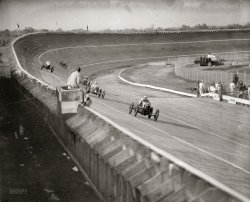
- Ferry Superior: 1905
- ... in those days so mostly shuttling walk-on passengers
"City of Portsmouth" has walking beam side wheel propulsion. "Superior" must be ... the battleship USS Wisconsin.
Ferry You can see the Atlantic Hotel on the left, the unfinished Confederate Monument (No Johnny Reb ... Posted by Dave - 09/29/2017 - 3:58pm -
![Ferry Superior: 1905 1905. "Waterfront -- Norfolk, Virginia." A going-away view of the ferry Superior. 8x10 inch dry plate glass negative, Detroit Publishing Company. View full size.
Tide or splash?One of those brilliant Shorpy photos that rewards extended viewing. Much as I'd love to gaze at the multi-spired cityscape across the river, I can't help staring in awe at the arcing embrace of the ferry slips, the planks of wood in long curves, attached to the log piles. But as a prairie-born lad, I must ask: is the high-water mark from tide or ferry splash?
[That's from a paintbrush and some sort of preservative. - Dave]
A busy portAn amazing pic in that it shows 4 ferries on a short crossing. Not many cars in those days so mostly shuttling walk-on passengers
"City of Portsmouth" has walking beam side wheel propulsion. "Superior" must be some other system of powering the side-wheels
No navaids of any kind, just lights. Navigation was probably mostly by range lights on the piers to guide docking
Vehicles1905, not too many vehicles around, Ferry is empty but why the seemingly huge access for ... horse carriages?
[See below. - Dave]
TidesWe're tidal here in Hampton Roads, but not THAT tidal. The actual tide line is the chalky white on the slips. The line is also evident (this time as darkened wood) on the pilings supporting the chain hoist beam post.
Some of the churches are still there.This looks to be taken in Porstmouth, looking across the Elizabeth River to Norfolk. In that case, some of the churches shown are obvious, such as Epworth United Methodist Church towards the left of the picture, and the Basillica of Saint Mary of the Immaculate Conception, towards the right. Lower down, just a bit to the left of St. Mary's, you can see historic St. Paul's Episcopal Church, known as "the church with a cannonball stuck in the wall" from the War of 1812; it would be the oldest building in the picture.
Most of the buildings are gone, but curiously, you can see Maury High School about a third of the way from the left, still in use, but almost a mile and a half off. I suppose that's because Maury is on one of the higher elevations in this part of Norfolk. Missing in what you would see from this point today is, towards the right, Harbor Park, towards the center right Waterside, and towards the left of center, Nauticus and the battleship USS Wisconsin.
FerryYou can see the Atlantic Hotel on the left, the unfinished Confederate Monument (No Johnny Reb on top) in the middle.
What is that white building about 2 inches to the right of the Atlantic?
What a magnificent city!
(The Gallery, Boats & Bridges, DPC)](https://www.shorpy.com/files/images/SHORPY-4a12466a.thumbnail.jpg)
- National Theatre: 1918
- ... For reasons unknown, it didn't happen. The play opened in Atlantic City before going to Washington. - Dave]
(The Gallery, D.C., Harris + ... Posted by Dave - 08/27/2012 - 3:21pm -
![National Theatre: 1918 March 1918. The National Theatre on E Street. At right is Shoomaker's, a favorite Shorpy hangout. Harris & Ewing glass negative. View full size.
Back to the SpongeDave, I've seen North By Northwest several times but other than the scene in the Plaza Hotel where Kaplan's suit is being delivered to the room or is that what you're referring to.
[Not sure I follow the question. Script below. - Dave]
Cary Grant at the Ambassador East, on phone to valet:
"Room 463. How quickly can you get a suit sponged and pressed? Yes, fast. 20 minutes? Fine."
Sponge Again Part 2Ok, but how did you remember such an insignificant piece of dialogue from a 50 year old movie.
[I've seen the movie and remembered the line is the best explanation I can give! - Dave]
Sponge AgainThanks, you answered my question. My new question is: How did you come up with that answer to a question so obscure, that quickly? You never cease to amaze me.
[I Googled the script for "North by Northwest." - Dave]
Out With The OldDid the "old" National Theatre burn down?
[The National had been "new" for more than 20 years, having been rebuilt following a fire in February 1885. The building in this photo was was torn down in 1923 and replaced with the current structure. This section of E Street is now part of Pennsylvania Avenue. - Dave]
WindowsThe one thing that always strikes me is all the open windows in these old large buildings, even in the winter. Today, working in Downtown anywhere, the windows will almost certainly be sealed shut, a consequence of our new ventilation systems. What we have lost is the connectedness to the street. It's like walking into a cocoon.
Dairy Lunch"Dairy Lunch" for a restaurant seems so unpalatable. I am wondering if there is some other reason to the name? Did it signify that it was non-kosher because dairy was served there? Or was it the other way around--meaning that there was no meat(only fish) served there?
["Milk bars" and "dairy lunches" were a phenomenon of the 1910s, 20s and 30s, a byproduct of the temperance movement. A lot of these places were bars and pubs before Prohibition. - Dave]
Baths?The pole on the sidewalk on the left side of the image appears to say "Baths." Would this be correct?
[Yes, if you needed one. - Dave]
SpongeThe tailor shop, to the left of National Dairy Lunch, has a sign in its window "Suits Sponged and Pressed." I've never seen or heard that term before. Was it an early form of dry cleaning or an expeditious way of getting the garment clean.
[So you've never seen "North by Northwest." - Dave]
Shows at the National"The Land of Joy" was a Spanish musical revue that opened on Broadway on Oct. 31, 1917 and closed in January 1918 after 100 performances. "Friendly Enemies" opened in New York on July 22, 1918, and closed in August 1919 after 440 performances--a major hit for 1918. The posters must be announcing an out-of-town tryout.
[A January 1918 item in the New York Times has "Friendly Enemies" set for a February opening in New York. For reasons unknown, it didn't happen. The play opened in Atlantic City before going to Washington. - Dave]
(The Gallery, D.C., Harris + Ewing, Performing Arts)](https://www.shorpy.com/files/images/13909a_0.thumbnail.jpg)
- Farm Fresh: 1917
- 1917. "City Market. Washington, D.C." Our third glimpse of this produce market. ... — Truck crop potatoes are shipped from the Atlantic seaboard points in ventilated barrels holding 2¾ bushels; from ... by weight at so much per bushel.
Cabbages from the Atlantic seaboard states south of Baltimore are shipped either in crates or ... Posted by Dave - 01/02/2014 - 10:53am -
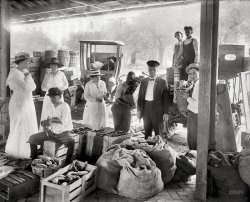
- Catalina Interlude: 1915
- ... exactly the same as the beach babies we've been seeing in Atlantic City and Coney Island. Mail order, perhaps?
[Magazines. - Dave]
Big ... Posted by Dave - 07/10/2018 - 3:23pm -
![Catalina Interlude: 1915 Catalina Island, California, circa 1915. "Avalon Bay Aquarium wharf and beach." 5x7 inch glass negative, Detroit Publishing Company. View full size.
Futuristic House on the HillI am familiar with the Holly House, but this one is new. Anyone have any idea what it is and if it is still there?
Stairway to heavenOne wonders if a lot of people's hearts gave out while climbing those endless staircases.
A Good TimeSnapping the diver off the high board is a good catch. Perhaps that was the subject of the photo.
I've been scuba diving off Catalina and that water tends to be COLD.
Was renting swim suits fashionable then? Both men and women seem to be in only one style of suit per gender.
United WirelessUp on the hill is the tower of soon to be defunct United Wireless Telegraph Co.
Onion DomeWhat is the building near the middle of the photo with the onion dome?
West Coast fashionSame as the East Coast fashion. I was curious to see if the women were all wearing black stockings here -- and they are. How miserable that must have been.
Interesting that in a world without mass media the styles of bathing suits for men and women are exactly the same as the beach babies we've been seeing in Atlantic City and Coney Island. Mail order, perhaps?
[Magazines. - Dave]
Big Avalon fire of 1915I'm fairly certain that nearly every structure in this photo burned down just a few years later and were replaced newer buildings; the house with the onion shaped dome is certainly no longer there.
(The Gallery, Boats & Bridges, DPC, Swimming)](https://www.shorpy.com/files/images/SHORPY_4a27571a.thumbnail.jpg)
- Carnegie Steel: 1905
- ... from which you can look directly down upon the part of the city which lies low, near the level of the rivers. On the evening of this dark ... hell with the lid taken off."
― James Parton, (The Atlantic Monthly. January, 1868)
(The Gallery, DPC, Factories, Railroads) ... Posted by Dave - 07/01/2014 - 2:47pm -
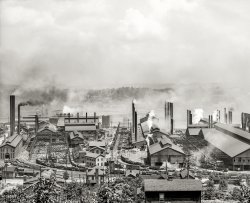
- Space Ranger: 1953
- ... a "Boardwalk Parade" is for the Miss America Pageant in Atlantic City? It seems to feature a tiara on a cushion.
[It was part of the ... Posted by Born Too Late - 06/08/2013 - 10:28am -
![Space Ranger: 1953 One of a series of professional 8x10 pictures taken in August 1953 for Better Living Magazine, featuring my in-laws. Here's my brother-in-law at age 5. View full size.
HeadlampThat is a 1952 Ford parking lamp being used as a headlamp.
That noseIt almost looks like it was made from a Studebaker grille.
Headlamp III have a question for "bravo tango".
Your photos show these lenses were produced by Van Brode, a one-time major supplier of plastic utensils from my father's hometown. Some claim that they were the inventor of the "spork".
They have since gone out of business and I'm curious where you obtained the lenses. Were they an aftermarket item since I don't see any Ford logos? If they are aftermarket I find it interesting that Van Brode produced auto items at one time.
[I attached the photo, found on an eBay auction. -tterrace]
Pleeeeaaaaase may I have a dime?To the right is the horse ride. My all time favorite. My poor mother couldn't get me out of the Woolworth store without me begging for a ride. They had a handsome one with a real leather saddle like the one in the picture. It was right by the bulk candy bins and popcorn popper. How I miss Woolworth.
The most awesome ride ever!There is a video of this ride in action here:
http://microcarmuseum.com/video/rocketship.html
This must have seemed incredible for a kid in 1953!
"There she is..."I'm wondering if the partially obscured poster in the window that mentions a "Boardwalk Parade" is for the Miss America Pageant in Atlantic City? It seems to feature a tiara on a cushion.
[It was part of the 1953 event. -tterrace]
Horse rides for a penny...are still available at my favorite King Soopers grocery stores in CO Springs! Alas, they are far too small for me to ride, now that I have all the pennies I want.
At the other endIf I recall correctly, the 'exhaust' on these rockets was (or resembled) the taillight lens of a 1953 Ford.
(ShorpyBlog, Member Gallery)](https://www.shorpy.com/files/images/Space_Ranger.thumbnail.jpg)
- Heavy Metal: 1920
- ... dry ice. His dry ice pie container was introduced in Atlantic City, N.J. in 1950. ...
Steam Power One of the Mythbusters shows ... Posted by Dave - 09/04/2012 - 2:43pm -
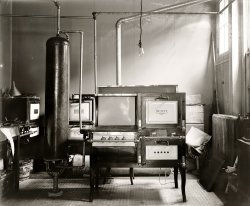
- Young Salts: 1900
- ... away by a rogue wave.
They had them at beaches in Atlantic City (pre-casino days) and also at Long Branch, and most other NJ shore ... Posted by Dave - 02/09/2016 - 8:35pm -
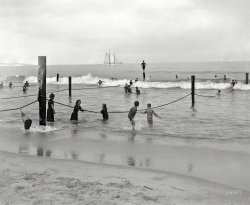
- Great-grandfolks
- ... grandmother, and grandaunt at Garden Pier in Atlantic City, New Jersey, taken in the late 1910s or early 1920s, with B. F. Keith's ... Posted by svensk13 - 07/31/2022 - 11:00am -

- Truck Parade: 1919
- ... on Pennsylvania Avenue. Employed on every line in the city, these cars were "sturdier than most and performed well until the end of ... is the same view taken in April of 2010. The top of the Atlantic Coast Lines building can be seen over trees in the 1919 view and is ... Posted by Dave - 07/17/2012 - 10:29pm -
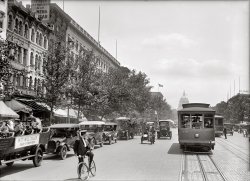
- Cooley Airship: 1910
- ... placed upon them. One of the chief features of the "Flower City," as the big craft will be called, is a device for lessening this strain, ... of the United States and Europe. The crossing of the Atlantic is but one of the least daring of these plans, and a direct flight ... Posted by Dave - 10/01/2012 - 12:08am -
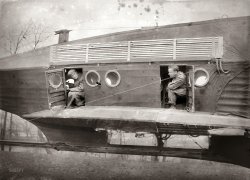
- Wish You Were Here (Colorized): 1905
- The Jersey Shore, circa 1905. "On the beach, Atlantic City." 8x10 inch dry plate glass negative, Detroit Publishing Company. ... Posted by woodchuck - 07/30/2010 - 12:26pm -
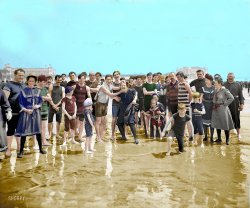
- Tampa Pier: 1900
- ... The name is also on those out buildings on the left. Atlantic Coast Line bought him out in 1902. Today, what remains of his railroad is part of CSX. The Strawberry capital of Florida, Plant City, was named for him. His greatest architectural contribution to Florida was ... Posted by Dave - 08/05/2012 - 1:14pm -
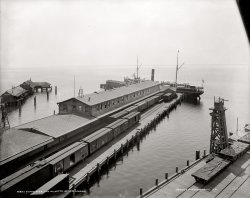
- Jersey Scouts: 1926
- Washington, D.C., 1926. "Atlantic City Boy Scouts on Ellipse." National Photo Company Collection glass negative, ... Posted by Dave - 04/18/2021 - 10:55pm -
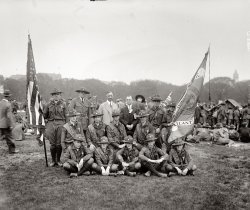
- Mechanical Treatments: 1938
- ... at 2308 Douglas, Omaha, NE. (A residential listing. ATlantic 3060, if you wanted to call him).
The house number above the ... chiropractic treatment?
He moved The 1936 Omaha City Directory lists Henry C. Rominger at 2312 Douglas. In 1939 he is at 2308. ... Posted by Dave - 08/02/2017 - 9:22am -
![Mechanical Treatments: 1938 November 1938. "Apartment house. Omaha, Nebraska." Medium format negative by John Vachon for the Resettlement Administration. View full size.
Creepy and it's SpookyThe Addams Family theme song keeps running through my head.
Window Box TreatmentROMINGER, Henry C., of Omaha, NE, died at the age of 95 on November 10, 1951.
The 1940 phone book lists H.C. Rominger at 2308 Douglas, Omaha, NE. (A residential listing. ATlantic 3060, if you wanted to call him).
The house number above the stairs near the Rominger signs in the Shorpy photo is 2312.
The address to the right in the photo appears to be 2310. That would make 2308 the building all the way to the right in the photo, with the lady coming down the stairs. Perhaps 2312 was a corner location with better visibility for signs than 2308. (Google Maps shows this area of Douglas Street to be commercial buildings and parking nowadays, so the street layout probably changed).
Could that be Ms. Rominger coming down the stairs of 2308? Could it be a client, if "mechanical adjustments" meant chiropractic treatment?
He movedThe 1936 Omaha City Directory lists Henry C. Rominger at 2312 Douglas. In 1939 he is at 2308.
If we could enhance the sign on the porch railing beside the steps we might have a better idea of what the mechanical treatments consisted of?
["Physical and mechanical treatments." Terminology was commonly used by osteopaths at the time. -tterrace]
Ham Radio Operator?I wonder if a ham radio operator lives there. That looks like an inverted-V antenna on the roof, which is a common antenna used by hams.
A tangled web of wiresAt one time, it seems someone had a radio to tune in the world or the local stations anyway. I believe Mr. Mechanical Maintenance should throw a little maintenance time to that aerial.
(The Gallery, John Vachon, Omaha)](https://www.shorpy.com/files/images/SHORPY-8b14279a.thumbnail.jpg)
- Tecumseh: 1916
- ... renamed Tecumseh; and placed in commission at New York City on 6 April 1898, Lt. G. R. Evans in command.
Six days after her ... at Norfolk, Charleston, and Key West, she joined the North Atlantic Fleet's blockade of Cuba on 26 April. Thereafter, she made frequent ... Posted by Dave - 08/28/2012 - 1:02pm -
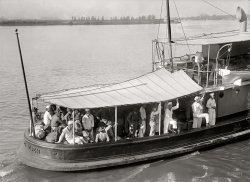
- Mlles de Mer: 1920s
- ... picture probably was taken on the west side of town near Atlantic Beach, where there's a boardwalk-less stretch of shoreline. The far ... that area would have been developed back in 1925.
City lore has it that circus elephants were used as beasts of burden in the ... Posted by Dave - 04/02/2014 - 11:13am -
